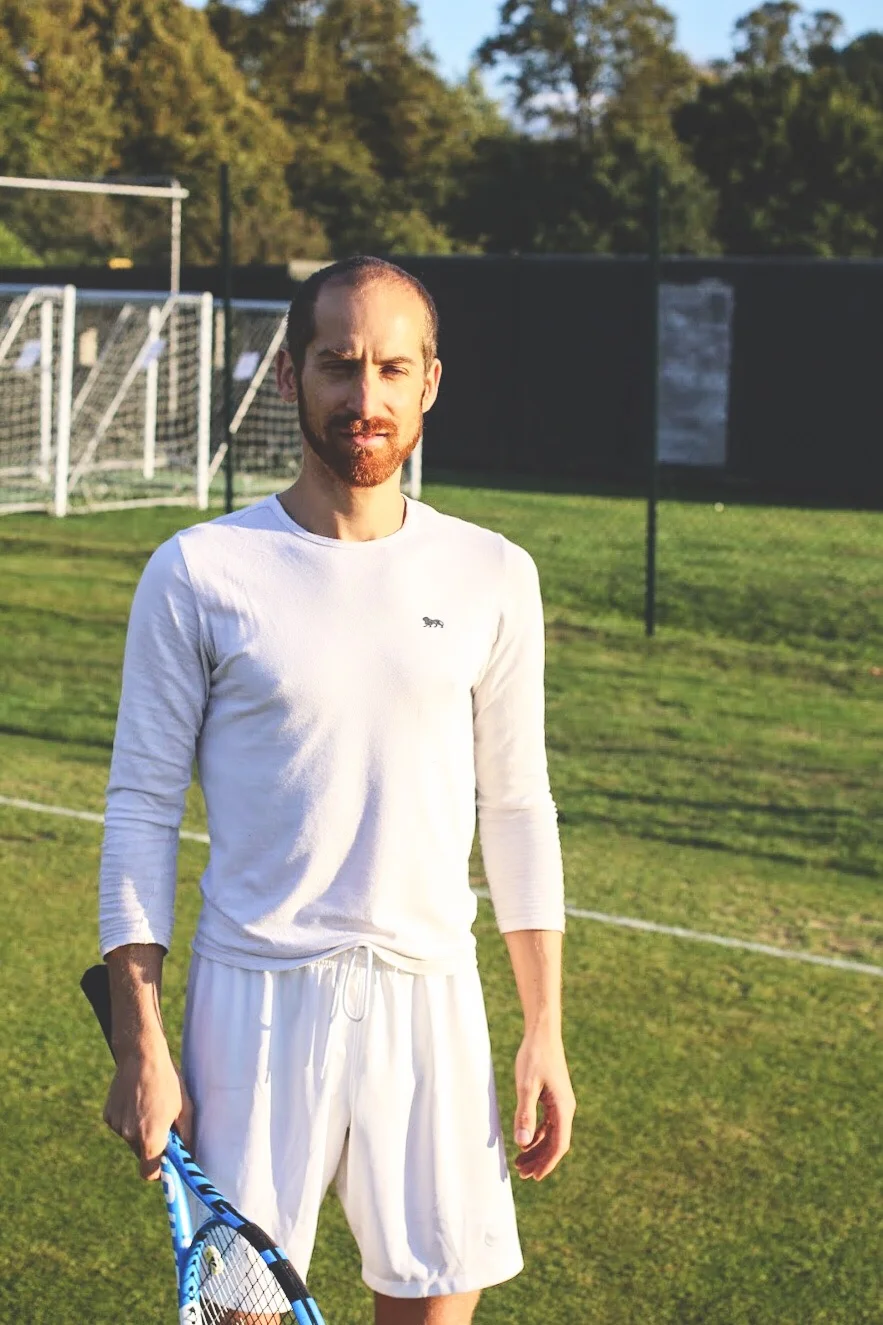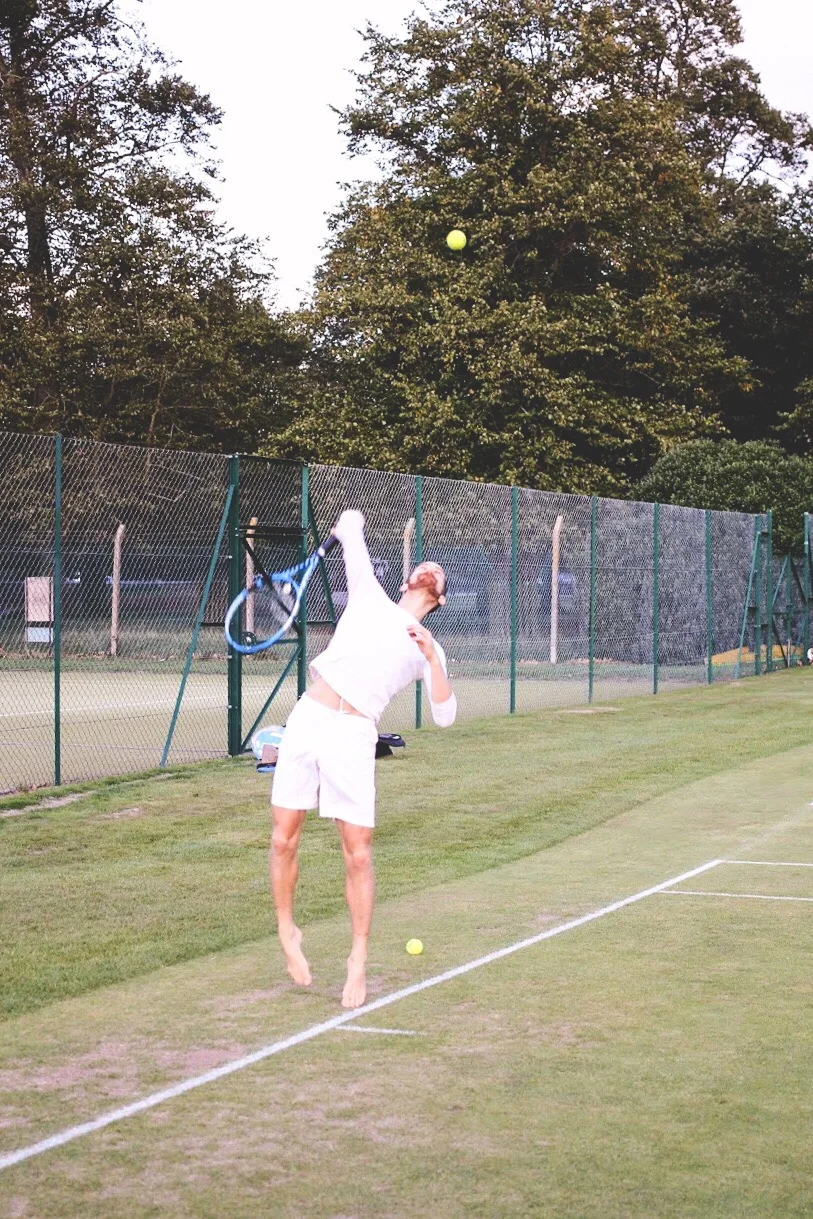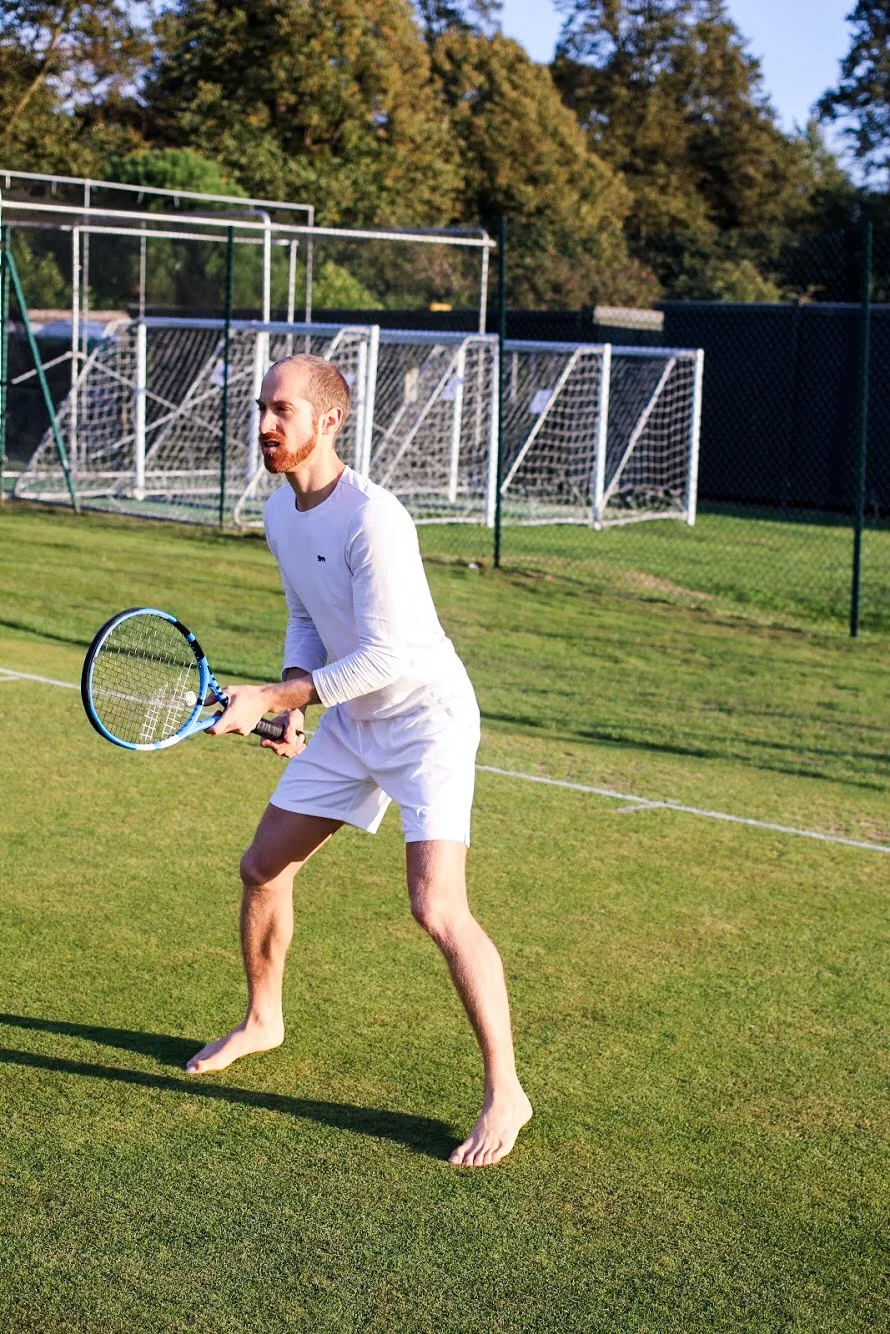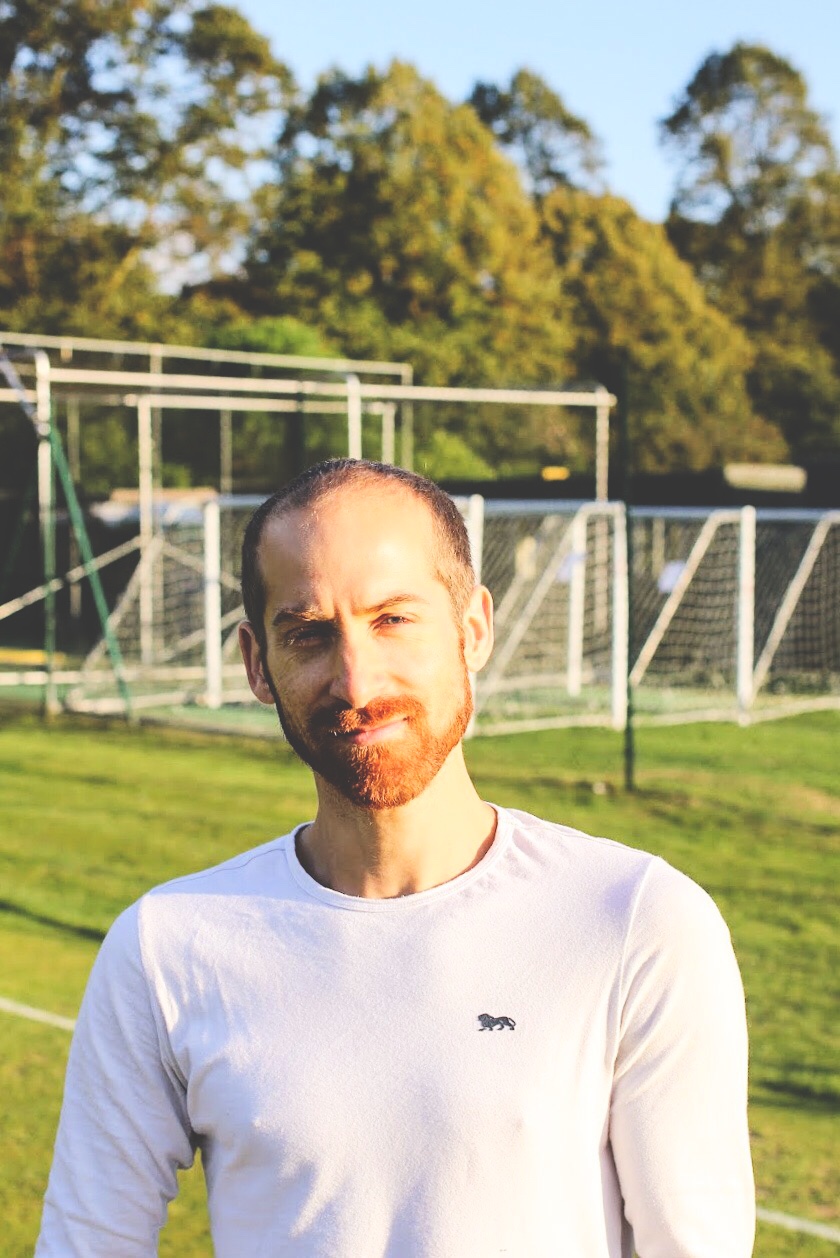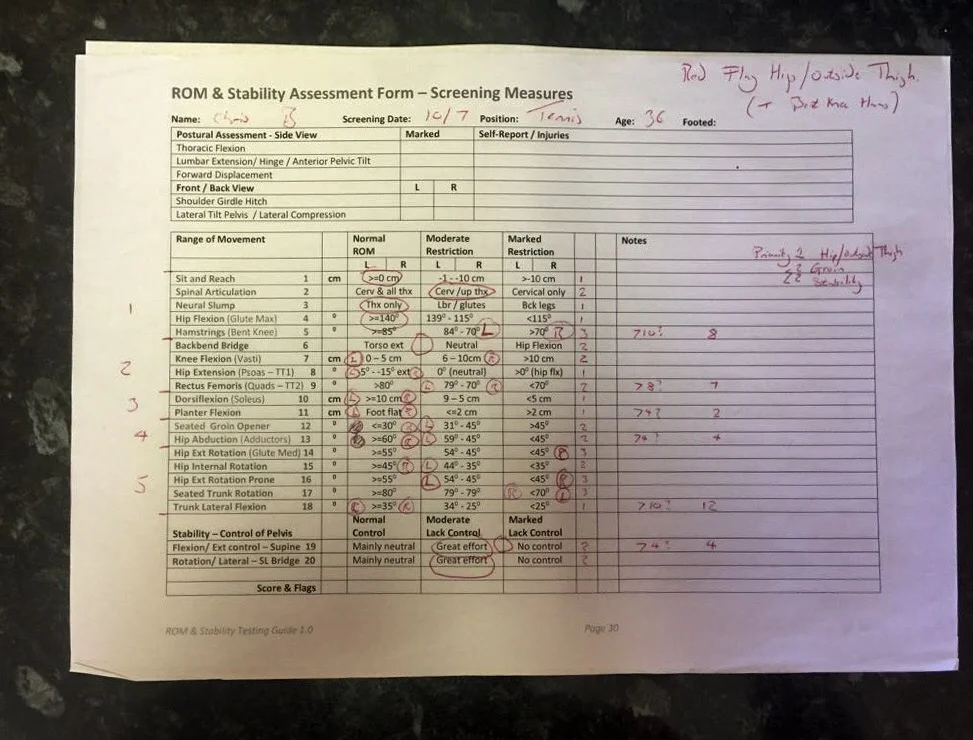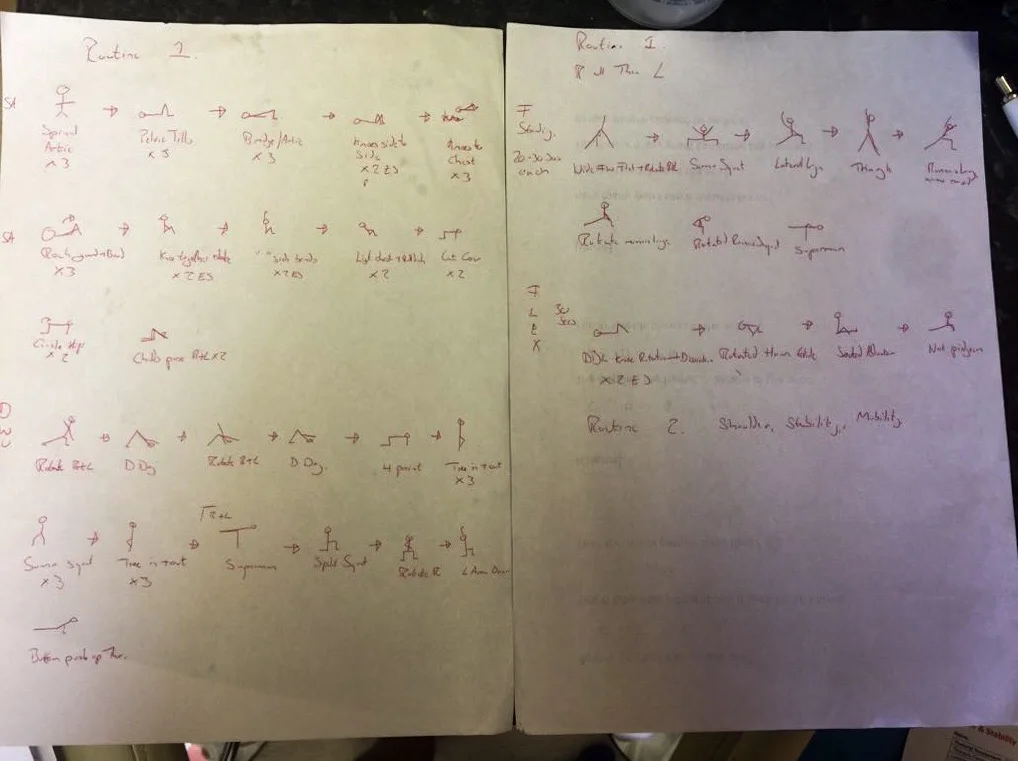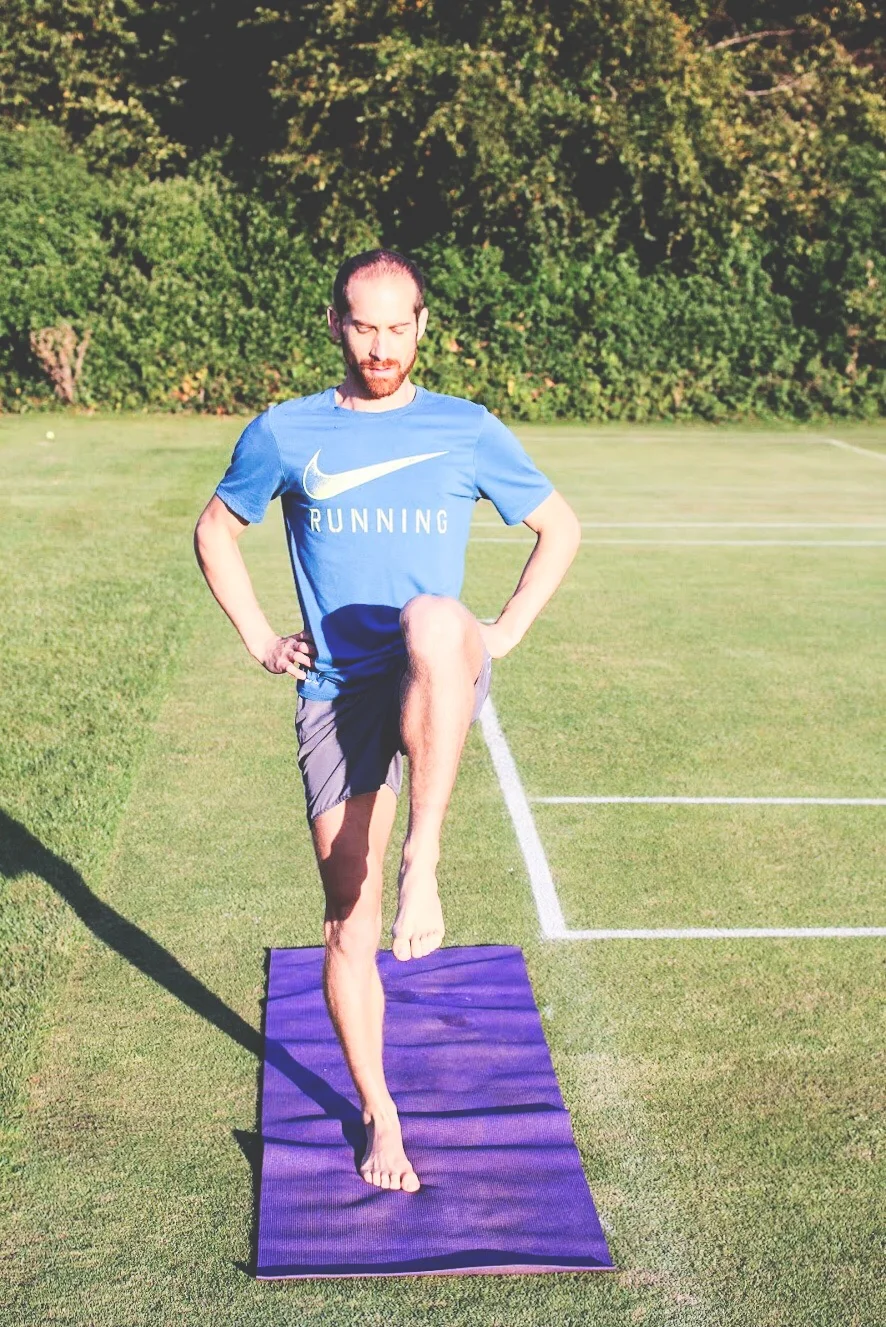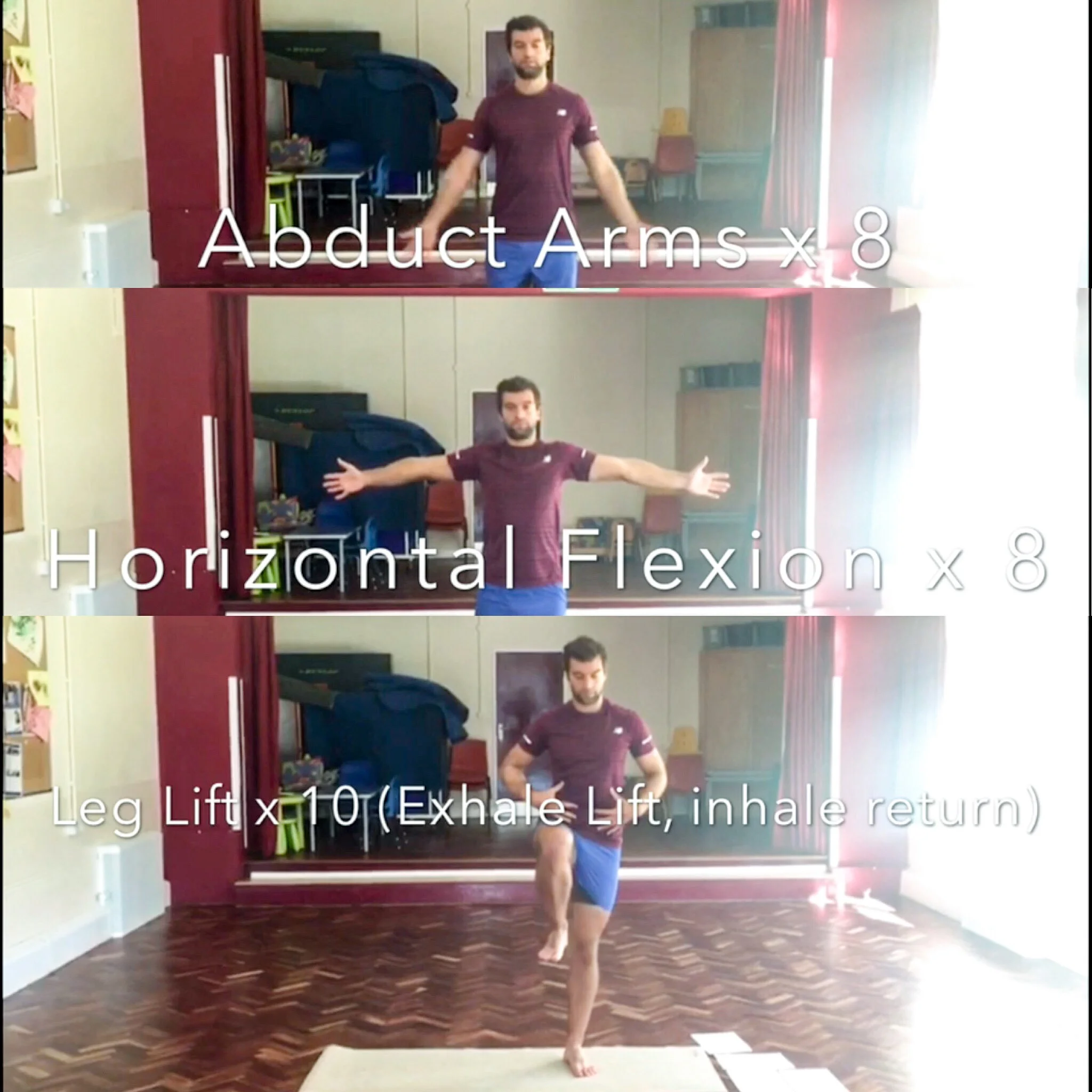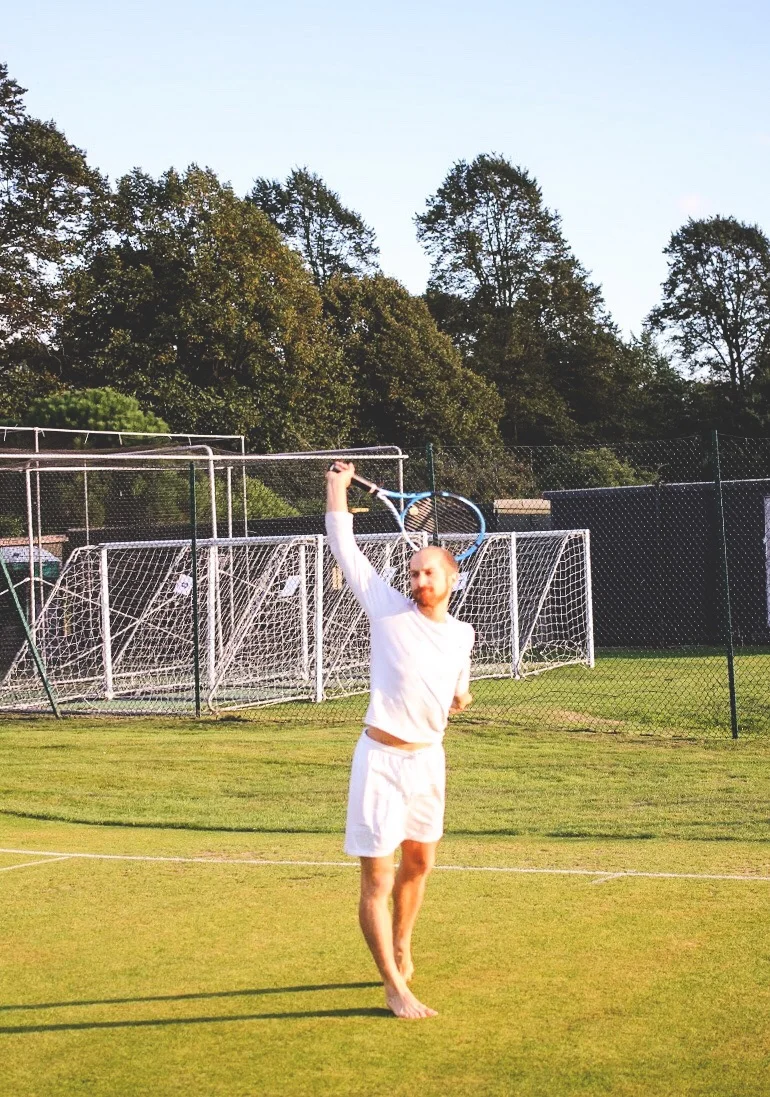Sports Yoga Case Study
Yoga for Tennis - A six week programme
Coach: Will Purdue
Athlete: Chris Belcourt
The demands of Tennis
Tennis is a racquet sport that demands many high intensity short bursts of movements, followed by short rest periods. It's incredibly unpredictable as a sport due to huge variations of match length, weather conditions, point length, shot selection and style of opponent all affect the physical demand on the athlete. Tennis unlike most sports does not have a set time boundary on matches, so will continue until the match is won. Also, tournaments are year round, so many pros compete up to 11 months of the year.
The physiological demands vary hugely depending on the type of match (singles or doubles), the surface (grass, hard court, clay), and also the players style (baseline play or serve and volley). Typical matches can last anywhere from less than 1 to up to 5 hours (rough average is 1.5 hours), so conditioning needs to be very high to prevent fatigue affecting performance. The ball is during play for around 20-30% of total match time, for example in a two hour match, ball in play time would be around 30 minutes. Despite the intermittent nature of tennis, studies have shown that in collegiate players heart rate average was round 144bpm on average over the course of an 85 minute match.
The average distance covered is around 1 - 4km, with the average being just above 2km. The average rally length is: On Hard-court 5.6 sec, On Clay-court the average is 8.3 secOn Grass-courts 2.3 sec.
Due to this, tennis is mostly an Anaerobic sport and they need huge anaerobic endurance, however due to the match length and repetition they need a high level of cardio fitness to recover between points and sets and ward off fatigue.
With the relatively short distances covered and short bursts of play, it shows the importance of having explosive power, speed and agility. Flexibility and whole body co ordination are also essential for being able to quickly reach the ball destination and adjust the body quickly into a successful position. Tennis skill mainly comes down to well trained hand eye coordination, visual perception, and tactical timing, and is then improved further by a high level of conditioning in all of the above.
Leg strength and power is crucial for an explosive first step towards the ball, and shoulder and trunk strength and power for both serves and ground strokes.
Photo example of extreme rom
Common Injuries
Strength and Stability is hugely important for absorbing impact and protecting the athlete from the common chronic injuries at lower limbs, knees and shoulders. As Tennis is a non contact sport with very few falls, injuries are generally chronic muscle injuries rather than impact, 2/3 tennis injuries are from overuse, with 1/3 due to a traumatic injury or acute event. The dominant shoulder is under particular stress, with lower limb and lower back issues also common. The rate of injury is estimated at around five injuries per 1000 hours of participation.
Common injuries include;
The top three most common are at the ankle, knee and calf. Below is a list of common injuries, with most coming from overuse;
Upper Body
- Tennis Elbow,
- Shoulder Impingement syndrome
- Shoulder bursitis
- Rotator cuff Tendonitis
- Carpal tunnel syndrome
- Lower Back stress fracture
Lower Body
- Lower Limb Stress fractures (often Tibia, Fibula, Navicular, Metatarsal),
- Ankle Sprain,
- Patella Tendonitis,
- Miniscus tear,
- Hamstring strain / tear
- Calf strain / tear
- Achilles tendinitis / rupture
Most tennis players can help reduce injury by strengthening the rotator cuff of the shoulder, increasing hamstring flexibility (to assist neutral pelvis and less reliance on lower back to stabilise) and hamstring strength (to help with impact of cutting). Creating more core and shoulder stability is important for effective balance and rotation.
Importance of building Strength in the tennis player.
A high level of strength is required for performance enhancement and to reduce the likelihood of injuries to joints, tendons and muscles.
Shoulder strength is essential for creating strong internal, external and diagonal torque, which are needed in all tennis strokes. The infraspinatus and teres minor in particular importance for ground strokes and even more so for serves, where they need to work eccentrically to decelerate motion and preserve healthy shoulder motion. Tennis demands extreme range of movement in the shoulder joint, so rotator cuff flexibility, and possibly more importantly strength and stability, is essential for both performance improvement and avoiding injury. Due to the shoulders needing strength in both concentric and eccentric contractions it will be important to consider this in programming.
Most injuries in tennis occur in the lower limbs, however the load is split fairly equally between both sides, however due to the nature of cutting and range of movement, unilateral work will be important to focus on alongside bilateral.
Importance of developing flexibility in the tennis player.
Tennis like all sports create unique muscoskeletal changes, from improving strength in places due to repetition through large range of motion, but also decreasing other joint ROM and muscular flexibility. Repeated muscle shortening results in microtrauma, which in time can cause scar tissue and further trauma, changing the athletes biomechanics, and making it difficult to access the ROM they may have had earlier on in their career. It can also decrease force production as the body can't maximise the stretch - contraction cycle and also places the, at higher risk of injury, as other muscles may be overloaded in an attempt to do so.
Tennis players need a high capacity of shoulder internal rotation, and often have a much lower level of external rotation, due to the demands of the serve. This may actually improve performance in the short term, however in the mid to long term improving external rotation is vital for avoiding injury.
One of the most common injuries is to the low back, which can be improved by hamstring strength and flexibility. Tennis players have poor hamstring ROM compared to most athletes, especially in the hamstring of the back leg from serving. A possible cause of shortened hamstrings is the amount of time in the low ready position, where the hamstring is shortened and contracted to provide a base for explosive movement.
PHOTO OF LOW READY POSITION
It will be important to assess flexibility, as creating too much flexibility in certain areas will impair power output.
Working with the Athlete / About Chris
I decided to start my programme design by meeting with Chris and compiling data to help me find priorities to focus on, and also find out information from him on how / what he commonly felt and what could be improved.
I gathered my data across two areas;
1. Athlete Feedback and from and Par Q (to help give me knowledge of previous injuries, know that he's in a safe position to train and also gain some tennis specific performance information. Also helpful for finding out his goals to help aid his motivation to starting the programme.
2. Flexibility and Stability Testing (To help me find key areas that need improvement, and where to focus our efforts.)
About Chris
Chris Belcourt
36
Electrician self employed,
Plays tennis, used to play a lot of football and rollerblading in youth, always a runner
Last 10-12 years Just tennis
Rating 7.1
Tennis Feedback Form
Short term goal? (3 months)
- improve speed
- improve leg strength
- prevent recurring injuries to calf and groin
Long term goal? (1 year plus).
- improve rating, 6.1 target
L or R handed?
R Handed
Which type of serve do you mainly use?
Flat serve for first, kick for second
Do you mainly play at baseline or serve and volley?
Baseline
Do you play mostly singles or doubles?
Mixture of two
How many tennis sessions per week?
2
How much stretching per week?
20 mins x 2 after tennis
Which areas do you find are tight after playing tennis?
Quads, calves though L usually worse
Which areas do you find are tight on off days?
Sometimes groin, sometimes knees
How many non tennis sessions per week, if so what?
1-2 weights sessions
Current injuries?
Some knee soreness, but pretty good
Mild Plantar fasciitis on L side
Previous injuries?
Torn adductors on both sides, ruled out for three months, about 2 years ago
2013 had really bad hamstrings for 18 months, immense pain, went to physiotherapy
Upper traps can tighten right up, and restrict breathing
Broken jaw and little finger when young
Very bad ankle sprains around 17 on left
Calves get tight and very painful
Plantar fasciitis
Three months off with tennis elbow in 2011
What areas do you feel you need to improve in regards to skill?
- second serve consistency
What areas do you feel you need to improve in regards to physical performance?
- more leg strength and speed
- agility
Barriers to improvement
- Sleep
The ROM and Stability Assessment
I met with Chris over two sessions to do the flexibility and mobility tests. Unfortunately we ran out of time in the first session, so had to meet again to finish off, however we did the same basic warm up before the tests on each day. Ideally we would have tested all on same day for more accuracy, however this wasn’t possible.
Here is a screenshot of Chris’ results.
RESULTS SCREENSHOT
It was interesting to test Chris, as he had a lot of flexibility in certain areas, and then was quite restricted in others. The main thing that jumped out during the testing process and before working out priorities was his hamstring flexibility. For the straight let hamstring related tests (sit and reach, toe touch - not strictly hamstring but informative) he aced them, and could reach his hands to toes without effort. However knowing that his hamstrings were a problem area, this really came out during the bent knee test. He came up as marked as that, and it seems that his quads are forcing his hamstrings into straightening at the knee, which is likely why he is getting hamstring issues as they are tight and weak. I made a note to include both bent knee hamstring stretches and some postures that will help to strengthen his hamstrings (Superman, Sprinter Lunge).
His priorities came out as;
1. Hip / Outside Thigh
2. Groin
3. Stability
Chris was interested to learn about his areas of tightness, and was really looking forward to incorporating a routine, feeling this should help prevent injury and get back some flexibility that he had when younger.
The Programme
I decided on splitting Chris’ Programme into two thirty minute routines. His priorities were;
1. Hip / Outside Thigh
2. Groin
3. Stability
However, with his muscle injuries and amount of flexibility in most of the ROM assessments, (For many he had normal), I felt stability should be a key priority too. As he has played for many years left handed too, I decided to keep equal work on both shoulders for now, but would reassess later (rather than doing more reps on one side). I wanted to keep the programmes fairly short to help him learn them, and that we could all allow wiggle room for coaching and breaking parts down, for example the Ab wall contractions and breathing. I also wanted to include a good amount of single leg work to strengthen his ankles after injuries, and also to help protect his knees which sometimes cause pain. In my programming I wanted to make sure I had;
- Torso Rotation, to help power and stability, so his core is creating more strength and power during strokes and cutting
- Thoracic Rotation, to help him move more through the torso to help him create more quality range for his shoulders
- Spinal Articulation, to help prevent Chris from extending from the same part of his spine during serve and give his back some more support, also to help maintain good posture in low ready position
- SGL Leg work, to strengthen ankles and give more stability when cutting
- Dynamic Flow, to help Chris improve movement awareness and quality, and control positioning, particularly of hips and knees during movement
- Core Stability, to help Chris centre his weight and not overload knees and ankles, which is really easy to do whisky cutting
- Shoulder Mobility and Stability, to help Chris get better movement quality from shoulders, but also have more strength through range
- Hamstring and external hip Rotators gliding, to help take the muscles through range before stretching to increase flexibility
- Longer stretches for adductors and hip flexors, to help them stretch and prevent them being so dominant
I also wanted to try and avoid;
- Too much work with weight on wrists due to his previous tennis elbow eg. Planks, push ups.
- Too much work in Seated positions as may tighten up external rotators and hip flexors further
That made me decide to split the programmes as follows;
A. Spinal Articulation, Movement Flow & Functional Standing Focus
B. Shoulder Stability + Mobility and Core Stability Focus
I used a stickman diagram on paper for my teaching cues, and then filmed the routines and cut out the stills. Here are the programmes in full.
Programme 1
Spinal articulation
Spinal Articulation x 3 -> Lying Pelvic Tilts x 5 -> Articulated Floor Bridge x 3 -> Rock Knees side to side x 2 each side -> Knees to chest, low back stretch x 2 -> Knees rock forward and backward x 3 -> Knees together Rotate x 2 each side -> Knees together side bends x 2 each side -> Lift chest, roll back Articulation x 2 -> Cat cow x 5 -> Circle hips x 3 each side -> Child’s Pose R and L x 2
Dynamic Warm Up
Sprinter Lunge Right Leg Rotate R and L -> Downward Dog -> Sprinter Lunge Left Leg Rotate R and L -> Downward Dog -> Four Point -> Stand on R Leg -> Tree in and out x 3 -> Superman -> Split Squat -> Split Squat Rotate Right -> Split Squat Right Arm side bend -> Sumo Squat -> Stand on L Leg -> Tree in and out x 3 -> Superman -> Split Squat -> Split Squat Rotate Left -> Split Squat Left Arm side bend -> Downward Dog -> Push Up with thoracic Extension -> Downward Dog -> Hop or Step forward
Functional Standing (20-30 secs in each pose)
Wide forward fold and Rotate R and L -> Arms Overhead Sumo Squat -> Lateral Lunge L -> Triangle L -> Runners Lunge L -> Rotated Runners Lunge L -> Rotated Runners Squat L -> Superman L -> Repeat on R
Flexibility (30 secs in each pose)
DBL Leg Rotation and Disascociation R and L -> Rotated Hamstring Glide x 5 and hold R and L -> Seated Abductor -> Not pigeon R and L
Programme 2 (Shoulder mobility and stability, and core stability focus)
Shoulder Mobility
Anatomical -> Abduction / Adduction x 8 -> Horizontal Abduction / Adduction x 8 -> Internal / External Rotation x 8 -> Bilateral flexion / Extension x 8 -> Unilateral Flexion / Extension -> Circling then reverse x 8
Dynamic Warm Up
L High Knee -> Superman -> L high knee -> OH split Squat -> Arms at Shoulder Rotation with Split Squat -> Lateral Flexion at Split Squat -> change sides and then repeat both -> end with push Up -> Downward Dog -> jump forward -> glide hamstrings
Stability
Anatomical -> Pelvic Tilt x 3 -> Ab wall and breath x 3 -> Lift Leg without shift x 8 -> Thoracic Rotation x 8 -> Raise Arms, torso resists x 8 -> Spinal roll downs x 2 -> Kneeling stabilise and detract shoulderblades x 5 -> Four point detract shoulders x 5 -> hold whilst moving x 5 -> Dog stretch relax to detract x 5 -> Plank to down dog stabilise to detract x 5
Gliding / Flexibility (Glide for reps or 30 sec hold)
Reverse Nordics x 3 toes under -> Reverse nordics x 3 feet flat ->
knee to chest circle R x 3 -> bent knee hamstring R x 3 then hold -> Double Knee Rotation R and L -> Thoracic Rotation / Disscociation R -> Rotated Hamstring Stretch x 3 and hold -> Repeat left -> Internal Rotation -> Kneeling Glute Stretch L then R
Delivering the Programme
Chris and I met seven times to go through the programmes and assessments together, for me to show him how to perform the exercises correctly and to give coaching points for his own practise. He then practise parts of it by himself once to twice per week.
Chris was new to Yoga, except for a bad experience getting injured in a class, so I felt he was slightly hesitant to begin, so I made sure to give lots of teaching points and reinforce breathing and taking gentle steps to begin, to avoid stretch reflex and stress response. However he was motivated as he could see how it would improve his tennis and his chances of staying injury free.
Chris enjoyed the sequence, though found it a lot to learn, and with the amount of flexibility he has in some areas found it hard to gain some movements from the right place.
We used the programme over seven weeks, however were slightly hampered by absences, as we both had holidays, so I gave Chris a copy to practise while he was away. However, I feel going forward I would design a mini programme for a new athlete like Chris, and have them practise a shortened version daily for when they’re without me. Although I tried for this with the two programmes, I think still they might lose the impact of short focused attention. For example I have given Chris these two programmes to continue with for when we aren’t meeting, one for an on court warm up and the other for home stability and flexibility work.
EVALUATION OF PROGRAMMES
I think with my enthusiasm to get lots of content in I may have slightly overwhelmed Chris at times, so I feel even shorter programmes will work better for his home practise, with then when we meet we can potentially do longer, and then develop his home routines further. Also I found there so many options to choose from that could potentially help, it may have hindered me cutting down to almost essentials, and then building up from there. In week five I designed a smaller programme that can be used as a warm up or stand alone session, to which we can build on once he’s more comfortable. The small programme still covers parts or each of Spinal Articulation, Stability, Dynamic Warm Up, Functional Standing and Flexibility.
Here is the mini routine:
Shoulder Mobility
Anatomical -> Abduction / Adduction x 8 -> Horizontal Abduction / Adduction x 8 -> Internal / External Rotation x 8 -> Bilateral flexion / Extension x 8 -> Unilateral Flexion / Extension -> Circling then reverse x 8
Stability
Ab wall contractions and breath x 5 -> SGL Leg Lift x 10
Dynamic Warm Up
L Knee to chest -> Superman -> Knee to chest -> high lunge -> Split Squat and Rotate -> Split Squat and Side bend -> turn 180 and repeat
Flexibility
Adductor gliding x 2 breaths and repeat 3 x
Standing hip circles x 8
Free Rotation x 8
Quote about new programme
chris photo with new programmes
Reassessment and Evaluation
We did another session and then did the full assessment. Here is the result.
REASSESSMENT Screenshot
Improvements
- Bent Knee Hamstring, marked to moderate
- Hip Aduction - moderate to normal
- Seated trunk rotation - marked to moderate
- Stability leg lifts - moderate to normal
Chris made some small improvements, however I feel we needed more contact time and home practise to achieve more, so we will continue working together to aim for this. I could have potentially also really zoned in on his Hips / Outside thighs, but I wanted him to practise some good global movement quality too, especially as he was new to Yoga. I think if starting again I would make more time available for teaching Stability breathing, and give a few drills for stability movements as a stand alone programme, as I feel this really provides a great base to maximise the benefit of all of the exercises in the routine. I was happy with the fundamental messages that I gave Chris, and feel this should help direct his movement work. For example;
- Flagging up his lack of hamstring flexibility when knee is bent
- Teaching effective core activation
- Coaching trunk rotation to come from the torso, rather than the shoulder, to allow the shoulder more healthy range.
- Understanding the importance of warming up.
- Giving examples of single leg work so he can train his body to better stabilise and have more strength and protection when cutting.
- Giving him exercises to help contract core muscles which should help him achieve his goal of more power.
Chris was really glad to have the mini programme and said that he’ll do it at least twice per week. He said he was happier with a simpler programme to continue with as he was worried about getting the movements right when I’m not there. He particularly enjoyed the gliding.
In conclusion I think it went well, and the case study taught me some good lessons on Yoga programming, especially how much time to allow for certain parts. It also helped me prioritise areas to focus, and choose particular exercises to achieve that, and really think about what I want from each movement. The case study was a great ‘real world’ experience, as programming around Chris’ matches and travels was difficult, but this is a challenge I will face with most athletes and I need to learn to adapt and keep in mind that any progress is good progress. However I would like Chris to achieve more, so the case study continues!

